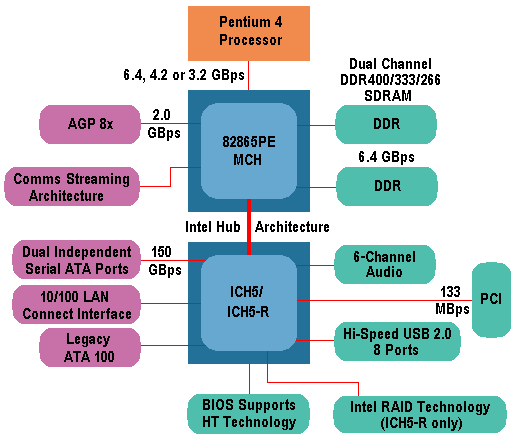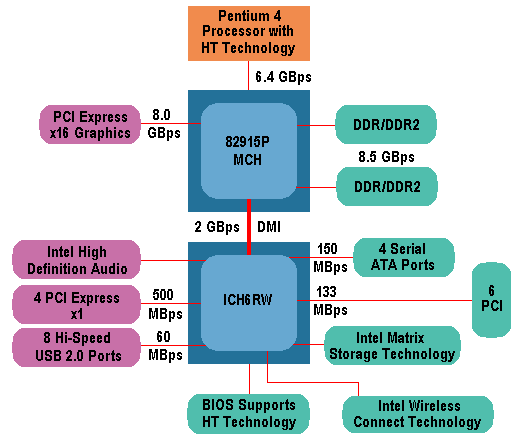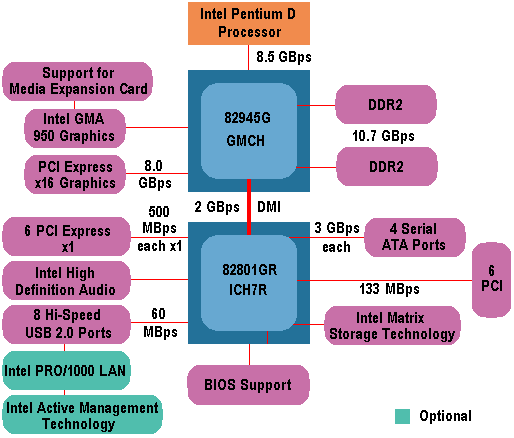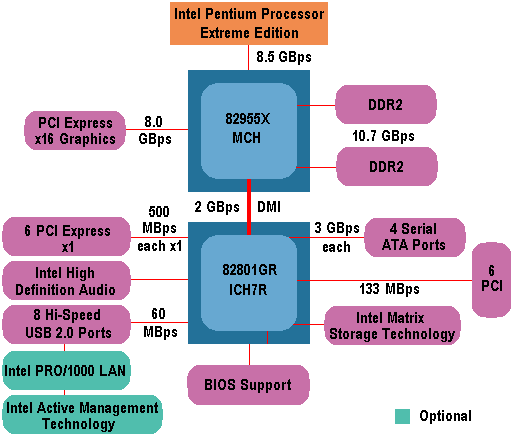At the end of 2002, Intel announced the launch of a dozen Intel Xeon processor family products, including new processors, chipsets and platforms for Intel-based servers and workstations. Amongst these was one single-processor chipset, the … [Continue reading]
i875P Chipset
Originally, Intel had planned to introduce a 800MHz FSB in the context of the Prescott, the upcoming 90nm Pentium 4 core. However, in the event this was brought forward to the spring of 2003. The … [Continue reading]
i865 Chipsets

If the i875 chipset can be viewed as the logical successor to i850E, then its mainstream variant, the i865 chipset - formerly codenamed Springdale - can be viewed as the logical successor to the … [Continue reading]
What is Intel’s 925X PCI Express Chipset
In the summer of 2004 Intel introduced a new family of chipsets that they claimed brought the most profound changes in PC platform architecture in more than a decade. The relative positioning of the chipsets - codenamed Alderwood and Grantsdale … [Continue reading]
i915 Chipset

Announced at the same time as the i925X Express, the i915 Express chipset family - codenamed Grantsdale and comprising the i915P and i915G chipsets - have the same features as its sibling with the exception … [Continue reading]
i945 Chipset

Since the current chipsets didn't recognise more than one CPU, Intel had no choice but to release new chipsets at the same time as its dual-core Pentium D and Extreme Edition processors. Formerly … [Continue reading]
Intel’s 955X Express Chipset – Glenwood

Formerly codenamed Glenwood, continues this practice, essentially providing the same features as the earlier 925X chipset, plus support for Pentium Extreme Edition processors. Ever since the release of its 865 and 875 chipsets in 2003, … [Continue reading]
i965 Chipset
In June 2006, Intel launched its 965 Express chipset, the formerly codenamed Broadwater, developed for use with platforms which feature the its Intel Core 2 processors. Incorporating Intel Fast Memory Access and an updated Memory Controller Hub … [Continue reading]
Handheld Applications

In the early days PDAs came with some variation on the set of familiar PIM applications, perhaps with a couple of games thrown in. The traditional PIM functionality has matured and grown in sophistication of the years, and continues to be … [Continue reading]
Handheld Synchronization
Without the capability to transfer and synchronize data back to a desktop system, there's little benefit in having a word processor or similar feature on a PDA - particularly as relatively few devices support printing via a parallel printer … [Continue reading]